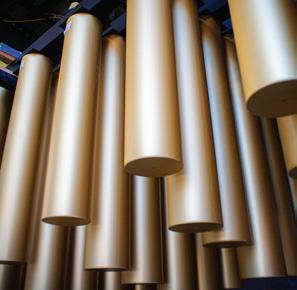
Te Waihorotiu Station
THE JOURNEY TO COMPLETION
“Arā noa atu ngā manga iti o Waihorotiu, e tupu nei te mauri, e tupu nei te ora”
“There are many branches and watercourses of Waihorotiu, where life and vitality flourishes”
The name of Te Waihorotiu Station is gifted in recognition of the Waihorotiu stream and wetland system that openly flowed near where the station is now located – through Horotiu pā and down to the Waitematā Harbour.

Te Waihorotiu Station highlights
Beautifully designed station entrances on Wellesley Street and two on Victoria Street
Modern underground train station, future-proofed for nine-car trains
Upgraded underground utility services
New road surfaces with dedicated bus lanes, bus stops, and loading zones
Enhanced public spaces - wider footpaths, new street furniture and cycleway infrastructure
Tree planting and garden beds at surface level




Four separate station design elements combine to tell a connected story
❶ Sky Element
Representing Ranginui (Sky Father), the sky element is depicted by thousands of coloured aluminium fins at Wellesley Street. The façade’s Poutama pattern represents the tears of Ranginui as he is torn apart from the embrace of his lover Papatūānuku, by their son Tāne.
❷ Threshold Element
Representing the station’s Māori deity (atua) and located above the ticket gate at Wellesley Street, hundreds of rods mimicking the stems of harakeke (reeds) and the movement of water are suspended from the ceiling to create a rippled lighting effect. At the centre of the reeds rests Horotiu - kaitiaki and mythical spirit guardian of the stream.
❸ Fourth Element



Representing te whaiao (the daylight or glimmer of dawn) this is a transitional element that provides layering, solidity and reflectivity to connect the earth element with the sky. This glazed canopy structure is a physical reminder of the act of Tāne pushing apart his parents. ❹ Earth Element
Representing Papatūānuku (Earth Mother), the earth element is depicted by precast concrete panels, the colour and texture of which mirrors the Waitematā sandstone often seen exposed on Tāmaki Makaurau’s cliffs.
Since its inception, City Rail Link has integrated te ao Māori values, stories and perspectives. The ongoing partnership with mana whenua is evident in the stunning designs of Te Waihorotiu Station.

❶ Skylights
Seven station skylights represent the Matariki constellationalso known as Pleiades. They allow natural light to flow into the underground area below. The names of these stars are Matariki, Tupuānuku, Tupuārangi, Pōhutukawa, Waitī, Waitā, and Ururangi.

❷ Cross-beams
The station, which itself is shaped in the form of a waka, has four notable crossbeams. These represent both a binding together of people to the land including cultivation practices and the link to the Matariki season, and the binding together of the waka - a nod to the movement of people.

❸ Motifs
Printed on dark panels at platform level is a stunning motif design by mana whenua artist Graham Tipene (Ngāti Whātua, Ngāti Kahu, Ngāti Hine, Ngāti Haua, Ngāti Manu). The motif is a further representation of the Horotiu stream and the movement of water.


Urban Realm
The streets around Te Waihorotiu Station will be upgraded to a high standard with basalt paved footpaths, cycleway infrastructure, freshly sealed roads, loading zones and bus stops. Trees are planted above ground alongside new street furniture. This work is coordinated with midtown regeneration projects including Auckland Council’s Te Hā Noa (Victoria Street) and Auckland Transport’s Wellesley Street Bus Improvements.

Bluestone Wall
This heritage bluestone wall was built on the eastern side of Albert Street between Wyndham and Victoria Streets in 1881. The wall was deconstructed in 2020 to enable Te Waihorotiu Station construction. Each of the approximately 1800 blocks were surveyed, numbered, and stored off-site – to be ultimately reinstated against the station wall to reconstruct this historic feature.

Mataaoho Pattern
At Kingston Street, an above-ground ventilation structure is wrapped with a pattern depicting Mataaoho (the Māori atua or deity of volcanic forces), designed by Johnson Witehira. The vent resembles a shard of rock, with its inner core made of dark concrete and a perforated outer aluminium cladding providing its irregular geometric shape.


